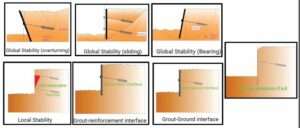Rockfall hazards present significant risks to infrastructure, human lives, and natural environments, particularly in mountainous regions and areas with steep slopes. As populations expand into areas prone to rockfall, the need for robust mitigation strategies becomes increasingly urgent. Modern approaches to rockfall mitigation combine advanced technology, engineering solutions, and safety measures to minimize risks and protect assets effectively.
Understanding Rockfall Hazards
Rockfalls are sudden, unpredictable movements of rock fragments down slopes under the influence of gravity. These events can be triggered by natural factors such as weathering, freeze-thaw cycles, earthquakes, or heavy rainfall, as well as human activities like construction, excavation, and mining. The speed, volume, and energy of falling rocks vary widely, making mitigation strategies complex and multi-faceted.
Traditional Mitigation Methods
Historically, rockfall mitigation strategies relied heavily on physical barriers and structural reinforcements. Key traditional methods include:
- Retaining Walls: These are concrete or stone walls built to stop or slow down falling rocks.
- Rockfall Fences: Steel fences placed along slopes to intercept and dissipate the energy of falling rocks.
- Netting Systems: Wire mesh nets installed on slopes to contain loose rocks and prevent them from falling.
- Ditches and Berms: Trenches and mounds that redirect rockfall trajectories away from infrastructure.
While these methods are effective to a certain extent, they are often labor-intensive and can be expensive, particularly for large-scale installations.
Technological Advancements in Rockfall Mitigation
Modern technology has revolutionized rockfall mitigation by introducing innovative tools and systems that enhance safety and efficiency. These advancements include:
1.Remote Sensing and Monitoring Technologies such as LiDAR (Light Detection and Ranging), drones, and satellite imagery allow for accurate mapping and monitoring of rockfall-prone areas. These tools provide real-time data to predict rockfall events and identify high-risk zones.
2.Early Warning Systems Advanced sensors embedded in slopes monitor vibrations, rock movements, and environmental conditions. Data from these sensors can trigger automated alarms, enabling proactive evacuations and timely interventions.
3.Energy-Absorbing Barriers Modern rockfall fences and barriers are equipped with high-tensile materials designed to absorb significant amounts of energy from falling rocks. These barriers are adaptable to varying terrain and rockfall magnitudes.
4.Dynamic Rockfall Simulation Software programs simulate rockfall trajectories to assess potential impacts and optimize the placement of mitigation structures. Simulations account for factors such as slope gradient, rock size, and velocity.
5.Geoengineering Solutions Techniques such as slope stabilization with rock bolting, shotcrete (sprayed concrete), and soil nailing enhance slope integrity and prevent rockfalls at the source.
Safety Measures and Human-Centered Design
Beyond physical and technological interventions, safety measures play a critical role in rockfall mitigation. Human-centered approaches include:
- Zoning and Land-Use Policies: Restricting development in high-risk rockfall zones.
- Protective Infrastructure: Designing roads, railways, and buildings with rockfall-resistant materials and layouts.
- Community Awareness and Training: Educating residents and workers about rockfall risks and emergency protocols.
- Regular Inspections and Maintenance: Ensuring that mitigation systems remain effective over time.
Case Studies in Rockfall Mitigation
Several successful projects showcase the effectiveness of combining technology and safety:
- Gotthard Pass, Switzerland: The use of remote sensing, rockfall barriers, and slope stabilization techniques has protected critical infrastructure in this mountainous region.
- Highway 1, California, USA: Dynamic rockfall simulations and netting systems have mitigated rockfall risks along this scenic yet hazardous coastal highway.
- Fujian Province, China: A combination of early warning systems and geoengineering solutions has safeguarded communities in rockfall-prone areas.
Conclusion
Rockfall mitigation strategies have evolved significantly, driven by advancements in technology and a deeper understanding of risk management. By integrating traditional methods with cutting-edge tools such as remote sensing, early warning systems, and dynamic simulations, engineers can design efficient and sustainable solutions. Moreover, prioritizing safety through zoning policies, education, and regular maintenance ensures long-term protection for people, infrastructure, and the environment. In a world where rockfall hazards remain an ongoing challenge, a comprehensive approach that combines technology and safety is essential for resilience and sustainability.







